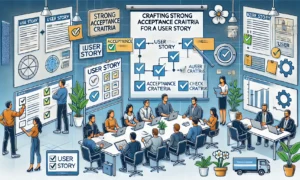Introduction
In today’s competitive business landscape, a customer-centric approach is no longer a luxury—it’s a necessity. As businesses strive to differentiate themselves, customer experience has become a crucial factor in driving growth, loyalty, and long-term success. A customer-centric business puts the needs, preferences, and experiences of customers at the heart of every decision. This mindset goes beyond simply offering great products or services; it’s about creating an organization that listens, adapts, and evolves in response to customer feedback.
But how can companies shift from being product- or service-focused to truly customer-centric? In this article, we will explore five key ways to create a more customer-centric business, providing actionable strategies to build better customer relationships and drive business success.
1. Understand Your Customers Through Data and Insights
The first step to becoming customer-centric is understanding your customers deeply. This requires not only gathering data but also interpreting it to uncover meaningful insights that can guide decision-making. A customer-centric business leverages data to personalize experiences, anticipate customer needs, and continuously improve offerings.
Key Actions:
- Collect customer feedback regularly: Use surveys, reviews, and direct customer interactions to gain valuable insights. Focus on understanding their pain points, preferences, and expectations.
- Use analytics tools: Leverage data analytics platforms to track customer behavior, preferences, and buying patterns. This data should inform decisions related to product development, marketing strategies, and customer service.
- Segment your audience: Not all customers are the same. Create customer personas and segment your audience to deliver more personalized and relevant experiences.
By continuously collecting and analyzing data, you can ensure that your business is in tune with customer needs and can adapt in real-time to changing demands.
2. Empower Employees to Deliver Exceptional Customer Service
Customer service is the frontline of any customer-centric business. However, to truly excel in customer service, it’s essential to empower employees at every level. When employees feel trusted, valued, and equipped with the right tools, they can deliver exceptional customer experiences that foster loyalty and satisfaction.
Key Actions:
- Invest in training: Ensure your employees, especially those in customer-facing roles, have the knowledge and skills to handle customer interactions effectively. This includes not only product knowledge but also communication skills and conflict resolution techniques.
- Provide autonomy: Empower your team members to solve customer issues without needing constant approval. This can improve response times and customer satisfaction.
- Create a customer-first culture: Make customer-centricity a core value of your business. Encourage all employees, from sales to marketing to IT, to understand and prioritize customer needs in their day-to-day work.
When employees feel empowered and motivated to deliver great customer service, they become ambassadors for your brand, strengthening the bond between your company and your customers.
3. Personalize the Customer Experience
Customers today expect more than just generic experiences; they expect personalized interactions that make them feel seen and understood. Personalization not only drives engagement but also enhances loyalty and satisfaction. By leveraging data, businesses can offer tailored experiences that meet the specific needs and preferences of each customer.
Key Actions:
- Customize communications: Use customer data to send personalized emails, offers, and promotions based on customer behavior and preferences.
- Offer personalized products or services: Allow customers to customize their orders, select options that match their needs, or use AI-driven recommendations to suggest products they are likely to purchase.
- Make use of CRM systems: Implement a Customer Relationship Management (CRM) system to store customer data, track interactions, and offer a personalized experience across touchpoints.
Personalization helps build stronger customer relationships, making customers feel valued and increasing the likelihood of repeat business.
4. Streamline Processes for Convenience and Accessibility
In a world of instant gratification, customers expect quick, hassle-free experiences across all touchpoints. One of the most effective ways to create a customer-centric business is by streamlining processes to minimize friction and enhance convenience. Whether it’s through improving online navigation, simplifying the checkout process, or ensuring prompt delivery, businesses must focus on removing barriers to make the customer experience as smooth as possible.
Key Actions:
- Optimize user experience (UX): Invest in user-friendly website design and app interfaces. Make it easy for customers to find information, browse products, and complete purchases with minimal effort.
- Simplify the purchase process: Offer a fast, secure, and straightforward checkout experience. Consider implementing features like one-click purchasing or multiple payment options to make transactions seamless.
- Improve customer support: Offer multiple support channels (e.g., chat, email, phone) and ensure they are responsive and easy to navigate. Quick, effective solutions to customer problems can dramatically improve their experience.
By creating frictionless processes and ensuring that customers can access what they need quickly and easily, businesses can increase satisfaction and retention rates.
5. Engage with Customers After the Sale
Customer-centricity doesn’t end once a transaction is complete. Engaging with customers post-purchase is essential for maintaining a strong relationship and ensuring ongoing satisfaction. A great product or service is important, but how you follow up and continue to add value after the sale is what turns one-time buyers into loyal customers.
Key Actions:
- Ask for feedback: After a customer has made a purchase, ask for their feedback on the product and the overall experience. Use this data to make improvements and demonstrate that you care about their opinion.
- Offer ongoing support: Provide excellent post-sale support, whether it’s offering troubleshooting guides, product manuals, or customer service follow-up. A customer who feels supported after a purchase is more likely to return.
- Create a loyalty program: Reward loyal customers with discounts, exclusive offers, or early access to new products. A well-designed loyalty program shows customers that their continued business is valued.
By continuously engaging with customers after the sale, you foster a sense of trust and community, which can significantly boost customer lifetime value.
Conclusion
A customer-centric business is one that listens to its customers, adapts to their needs, and creates exceptional experiences at every touchpoint. By leveraging data and insights, empowering employees, personalizing experiences, streamlining processes, and engaging with customers post-purchase, businesses can create a culture that truly revolves around the customer.
The benefits of a customer-centric approach are clear: increased customer loyalty, higher retention rates, improved brand reputation, and ultimately, sustainable business growth. In today’s competitive landscape, businesses that prioritize customer-centricity are the ones that will thrive and lead the way forward.
As you work to implement these strategies, remember that becoming a truly customer-centric business is a continuous journey. Listen to your customers, learn from their feedback, and evolve your approach as their needs change. The customer is always at the heart of your business, and by putting them first, you will be positioned for long-term success.
Key Takeaways:
- Understand your customers through data and insights to personalize experiences.
- Empower employees to deliver exceptional customer service.
- Personalize interactions and offerings to enhance customer relationships.
- Streamline processes to remove friction and create a seamless experience.
- Engage with customers after the sale to foster long-term loyalty and trust.
Becoming a customer-centric business isn’t a one-time task; it’s a mindset that should permeate every aspect of your organization. Through these five strategies, you can start building stronger, more meaningful relationships with your customers and drive long-term growth.
Disclaimer
Posts in the Notebook are written by individual members and reflect personal insights or opinions. Please verify any information independently. If you have any concerns, notify the admin immediately so we can take action before any legal steps are taken.




